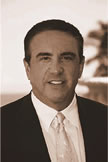You are here: Home: NHLU 1 2005 : Editor's Note
 |
|
| The management of long-term strategies in indolent lymphoma |
A 53-year-old man is diagnosed with Stage IV follicular lymphoma. The patient is asymptomatic and wishes to evaluate all available options. He seeks multiple opinions about his case.
The first oncologist explains that the disease is incurable but compatible with reasonably long survival. He recommends observation without treatment. The second oncologist explains that the disease is incurable but compatible with reasonably long survival. He recommends rituximab.
The third oncologist explains that the disease is incurable but compatible with reasonably long survival. He recommends R-CHOP and discusses future transplantation options at relapse.
The fourth oncologist explains that the disease may be curable and is compatible with reasonably long survival. He recommends R-FND.
The fifth oncologist explains that the disease is incurable with current treatment approaches, but clinical trials are evaluating new and promising strategies. He recommends entry into E4402, an ECOG trial that randomizes between rituximab up front with indefinite maintenance or rituximab up front with re-treatment on progression. |
Few clinical situations in medical oncology are more controversial than the management of indolent lymphoma. This issue includes discussion of all of the above treatment strategies and more. To launch the new year, we invited three prominent research leaders in NHL to visit our CME group in Miami during a nonsnowy week in January.
On day one, Ian Flinn, a soft-spoken, thoughtful physician and investigator, reviewed his current work at Hopkins, including a fascinating protocol investigating high-dose radioimmunotherapy for patients with relapsed indolent NHL. Like many leaders in the field, Ian’s second-opinion cases often involve younger patients with indolent lymphoma, and I was surprised that he answered without hesitation when I asked him what he would do or recommend to a family member in this situation. He noted that his first-line approach would be R-CVP or R-CHOP, but he would strongly consider transplant as salvage therapy.
Two days later, Fernando Cabanillas visited our office. Our introduction to Dr C came several months earlier when he served as a faculty member for our “Meet The Professors” November recording session in New York and woke the group up faster than a Miami “colada” (large Cuban coffee) with the most controversial comment of the day.
Specifically, Dr Cabanillas postulated that a plateau occurs in the survival curve at about six to eight years after therapy for indolent lymphoma, and based on a retrospective series he first reported at ASH in 2002 (Liu 2002), he believes that the disease is in fact a curable condition. For this reason, his standard first-line approach in nonelderly patients is chemotherapy and rituximab — usually the R-FND regimen developed at MD Anderson.
The third visiting professor was Oliver Press, who was surprisingly spry and alert after taking the red-eye from Seattle. I shared Dr Cabanillas’ viewpoint with Dr Press, who tactfully commented, “I would like to believe that was true and perhaps it is, but that certainly is not the consensus opinion at this time. I hope it will be in the future.”
These three visiting professors had differing opinions on many issues. For example, Dr Cabanillas generally uses rituximab maintenance in indolent NHL because he perceives a positive benefit-to-risk ratio even if the only benefit turns out to be progression-free survival. The other two investigators are less certain about this strategy and use it in a minority of patients.
It is interesting to consider that patients interfacing with the five oncologists in the theoretical case scenario would have very different experiences over the ensuing months. Some would suffer from treatment-related side effects like fatigue, alopecia and neuropathy, while others would remain asymptomatic. As with every controversial situation in medical oncology, patients and physicians must sift through the options and together arrive at the best individualized decision based on current available research evidence.
All three speakers agree on one issue: Clinical trials must be efficiently designed and executed, so that in the future we will have perhaps fewer but more effective and less toxic treatment options available for these patients.
— Neil Love, MD
NLove@ResearchToPractice.net
Select publications
Liu Q et al. Stage IV indolent lymphoma: 25 years of treatment progress. Proc ASH 2002;Abstract 1446.
Malek SN, Flinn IW. Incorporating monoclonal antibodies in blood and marrow transplantation. Semin Oncol 2003;30(4):520-30. Abstract
Press OW. Radioimmunotherapy for non-Hodgkin’s lymphomas: A historical perspective. Semin Oncol 2003;30(2 Suppl 4):10-21. Abstract
|

